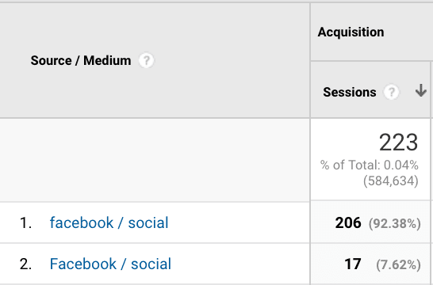-2.jpg?width=1280&height=720&name=620ca4ec992ced5ad05ead74_edho-pratama-yeB9jDmHm6M-unsplash%20(1)-2.jpg)
Do you use Google Analytics to analyze traffic? Do you UTM tag your links?
UTM stands for Urchin Tracking Module and is an easy way to tag and track traffic from different sources/campaigns.
The UTM tag is a piece of text that you put after the URL that you want to track. It can look like this (the UTM tag is bolded):
https://www.leadfront.com/?utm_source=Social&utm_medium=Banner&utm_campaign=Spring_sale
With UTM tagging you can, among other things:
-
Compare different campaigns.
-
Compare traffic coming from different sources.
-
Measure which paid keyword is performing best.
The different parameters
There are 5 different UTM parameters to use. The 3 that are commonly used are Source, Medium and Campaign but if you want a little more insight you can use all 5, it's completely up to you but it's good to have some kind of structure. Below you will find what the different parameters are used for:
-
Campaign source (utm_source) - The source that the traffic comes from such as Google, Facebook etc.
-
Campaign medium (utm_medium) - To see what type of traffic such as cpc, social, email etc.
-
Campaign name (utm_campaign) - The name of the campaign for example Spring_sale
-
Campaign term (utm_term ) - To track specific keywords, mainly used for keyword ads.
-
Campaign content (utm_content) - Used to distinguish ads that have the same landing page, for example, if you have two CTA buttons in an email, "content" helps you to distinguish these two.

How to create a UTM tag?
When it comes to creating the UTM tag, there are two different ways that you can use. The first option is to use a URL generation tool, where you fill in the various fields and a link with UTM tag is generated. You can find such a tool at the bottom of this post.
The other option you can use is that you create it yourself using a spreadsheet. The advantage is that you can create several pieces in quantities and that it will be easier to create a structure in how to name them.
Things to consider when naming your UTM tag
When naming your UTM tag, it is important that you remember not to use spaces because then it will not work. Instead, use - or _ when naming for example spring_sale or spring-sale.
Create a naming convention to keep everything structured so that there is no room for mistakes.
UTM tags are case sensitive. You should consistently use the same format when tagging your links, otherwise your campaigns will show up on different rows in Google Analytics.

Therefore, it is important to decide the structure in advance and document and onboard everyone who will be using the UTM tagging structure to avoid duplicates in your analytics data.
When you have an anchor link in your URL, you need to place it after the UTM tag for it to work. As in this example (Anchor link is bolded) https://www.leadfront.com/om-oss#bokasnack so if we were to make this a UTM tag it could look like this https://www.leadfront.com/om-oss?utm_source=social&utm_medium=banner&utm_campaign=spring_sale#bokasnack
Example of when UTM tags are useful
Social media
For example, the URL in the profile on social media such as Instagram, you can URL tag to track how many people click through to the website, another option is posts that you publish.
When sending out emails, it is good to UTM tag the links on different CTAs to see which CTAs received the most clicks and which campaign the visitor engaged with.
Visitors who come via email usually stay longer on the website. Sometimes it can be interesting to exclude this traffic source when analyzing your website traffic and visitor engagement levels.
Where can I find the data?
Now that you have UTM-tagged your links and want to see how they perform, click on Google Analytics - Acquisition - Campaigns - All Campaigns where you get an overview of how your campaigns perform. Here you can see, among other things, which campaigns are driving the most traffic and the quality of the traffic that comes in if, for example, it has a high bounce rate. You can also add other filters depending on what you want to analyze such as new users, time periods, how long they have stayed on the page and much more.



.jpeg)


